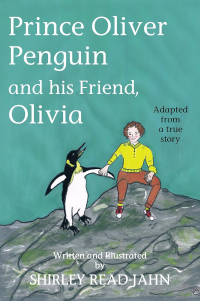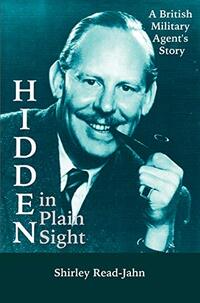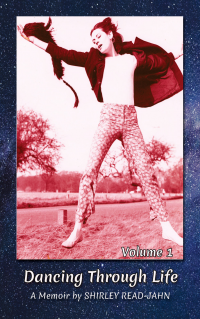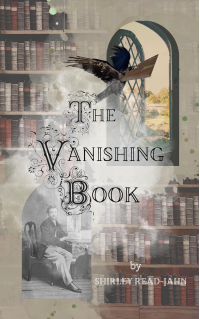Shirley Read-Jahn Interview Published on: 14, Mar 2024
 Can you tell us a bit about yourself and what inspired you to become a writer?
Can you tell us a bit about yourself and what inspired you to become a writer?
I’ve always been known as a communicator. When a young woman, people called me “Ms. Post Office” because they knew I was always in touch with everybody. If they wanted to find out how or where someone was, they’d go through me to locate that person. The first book for adults that I wrote, Hidden in Plain Sight, a British Military Agent’s Story, was always in my head in that all my life I wanted to follow in my father’s footsteps. He’d taken some four months to get to Moscow during WWII, where he would continue his intelligence work for Britain. It was an extraordinary journey through many countries, and I planned to repeat it and write a story comparing his trip to my trip. But, my life (work, marriage, a child) all got in the way and I never made the time to repeat his journey. After his death, I found his missing letters and used those to eventually write his story. There was a huge amount of research involved and one day I took a break from his story and began to draw penguins. My friend at boarding school spent her holidays in the Falkland Islands where a king penguin had befriended her. That story was quite remarkable. I stayed in touch with her all her life and asked her permission to write her tale. I took a break from my father’s story, and so began my adventure in writing and illustrating children’s books.
Can you describe your daily writing routine? How do you manage your time and stay disciplined?I get up very early each morning. That is the best time of day for me to write. I listen to audiobooks on my exercise bike or just exercise, thinking about my writing and illustrating. I am now 79 and have Parkinson’s Disease. To keep that from progressing, I exercise on my static bike, teach a weekly belly dance class, and play table tennis. I’ve discovered that drawing and painting is also great for hand-eye coordination, also helping to hold my PD at bay. After exercising, I sit at my computer and write. I do my drawings and paintings later in the day.
Your body of work includes both children's books and memoirs. How do you navigate the shift in tone and style when transitioning from writing for children to delving into personal narratives?Writing and illustrating children’s books is like a holiday for me, a break away from the research and thought when writing my memoirs. When writing Hidden in Plain Sight, a British Military Agent’s Story, I had to remember and/or research how people from the 1940’s and ‘50’s spoke, their inflections, the idioms, just the words they used as they talked. The same thing for The Vanishing Book, but for that book I had to switch from how my great grandfather and Charles Dickens would have spoken, to how I speak in modern day Australia and England in those chapters where I am searching for the missing monasticon book. For the kids’ books, I write in a more simplistic style, and touch on subjects I feel they can relate to and understand.
As an author and illustrator, how do you find the balance between visual storytelling and written narrative in your children's books? Do you typically start with the words or the illustrations?I start with the story then go through it and pick out the most important moments in the tale to illustrate. I try to break up rather long narrative with a picture.
Having contributed to anthologies, how has the experience of collaborating with other authors shaped your writing process and perspective?Although many of the other writers’ chapters are published in various locations prior to the actual publication of the anthology, I choose not to read them before I’ve written my own chapter. I read others’ work afterwards and am mostly in awe and admiration of how they’ve written their chapters!
What inspired you to delve into memoir writing, and how do you approach blending personal experiences with literary elements to create a compelling narrative?I’ve lived a long life already, filled with adventures and different experiences, both in work and personally. Over and over, people would tell me to write my stories I’d share with them. I finally decided to go ahead with my own life story, changing the names to protect the often not-so-innocent! Regarding the literary elements in my books, there’s a lot of research that goes into that aspect. Using direct speech helps make much of the history become more palatable to the reader.
Given your diverse body of work, how do you tailor your writing style to engage different age groups and demographics? Are there common themes that thread through your works?For my children’s books, I think about what interests kids. Common themes are morals in each book, such as sharing, not fighting, being kind. For my books for adults, I think about the story I plan on writing, what I find fascinating in the history of the era I’m setting my story in. Then I weave in facts and details and events of those times, wrapping them around the actual story in my head. That’s where I blend the truth with creative liberties, but always based on what I’ve learned was likely to have happened.
Writing for children transitioning from picture books to text-only books is a unique niche. What challenges have you encountered, and how do you ensure your writing caters to this specific audience?The hardest part is saying what age group my children’s books cater to; it all depends on the maturity of the particular child. Generally, I say 4-8, or somewhere around those ages, but even 2-year-olds like my books read aloud to them, as does the occasional 10 or 11-year-old, plus many parents and grandparents love them! My children’s books always have some sort of moral in them, you must share your toys, be kind, don’t pull your brother or sister’s hair sort of thing. Kids can relate to that. I sell my books at many markets. One challenge is that a child will want a certain book, but often the parent drags the child away, saying they can read books on-line. That’s a shame, because there’s nothing like holding a book in your hand, even smelling it, having it next to you on your bedside table or in your own bookshelf. Of course, my books can all be purchased on-line, too.
Among all the characters you've created, which one is your favorite, and why? What aspects of character development do you find most rewarding?I probably like Braith the Basset best. He was such a crazy dog, doing such nutty things, but so endearing. He was very funny, too. I enjoyed illustrating him committing different antics. I received a letter from a young boy from Thailand. He told me how my book made him laugh all the way through. This pleased me enormously. I also like Cranky the Cat. She starts out cranky, mean, quite horrible but turns into the sweetest cat by the end of the story. Both these books are completely true stories. As a matter of fact, all my writing is based on true stories. If I don’t know what happened, I research the times and situations, and figure out what probably happened. Working out how to show an emotion on a character’s face is rewarding, when it works! For example, it took me a while to figure out how to make Cranky’s face look cranky, on the cover of that book.
How do you think your writing style has evolved over the course of your career, and are there specific moments or projects that marked significant milestones in this evolution?I have become braver and bolder over my writing career. It takes a certain bravado to write, to write without concern for whether people will enjoy one’s work, to open up, and write about subjects one normally wouldn’t address. A significant milestone for me was in my latest book for adults, The Vanishing Book, where I included a few mildly sexually explicit scenes. In my Hidden in Plain Sight book, I’d only intimated risqué encounters.
Your biographical fiction falls between factual events and fictional elements. How do you approach the challenge of maintaining historical integrity while allowing for creative liberties?I research the historical aspects assiduously. Because I wasn’t there, I have to imagine what probably happened and include creative scenarios based on my research, often by using direct speech in the tone and wording used at that time in history.
Memoirs often involve introspection and self-reflection. What motivated you to share your personal stories, and what impact do you hope your memoir, "Dancing Through Life, Volume 1: A Memoir" have on readers?As said above in question 6, many people have asked me throughout my life to write my stories and adventures down. I’m told I’m a good storyteller and people seem to enjoy listening to me talk. I hope that my first personal memoir, Dancing Through Life, both volumes 1 and 2, will amuse and delight readers, and encourage them to tell their own tales. Everyone has a story inside them, especially people who have lived a long time, travelled extensively, worked in many different arenas, and known many fascinating people in life, as I have. I particularly hope that my descendants will read my memoirs and learn what their ancestor was all about!
As an author who also illustrates your own children's books, how do you approach collaboration with other illustrators when working on projects that involve separate writers and artists?I don’t work with separate writers except my short stories appear in anthologies along with their work. My stories are in three so far, shortly to be in four. I do collaborate with other artists in the formatting stages of my books. I’m open to any ideas they may have. I submit ideas and illustrations for the book covers to the formatter, who is an artist herself. She takes my ideas and enhances them for the final product.
Can you share any details about your upcoming projects? Are there specific genres or themes you're excited to explore in the future?I’ve just had a short story accepted for an anthology to come out around Valentine’s Day 2025 to be called Not Marriage Material. I’ve been advised I may promote it anywhere, and here’s the link (https://suebaveycom.wordpress.com/2024/02/17/not-marriage-material-submission-5-a-near-miss-thankfully-by-shirley-read-jahn/). My story is called A Near Miss, Thankfully. Another theme I’m working on is travel memoirs. I have three planned. The first one is called Snowflake Goes to Queensland. It is currently in the editing stage. Snowflake is the name of our camper van in which we travelled all over Australia.
Lastly, what advice would you give to aspiring writers who are looking to break into the publishing industry and pursue a career in writing?Just do it! Pour it all out in a stream-of-consciousness to get it down onto the page. Only then go back to edit it. So many people edit, edit, edit, as they go along, and then get stuck, lose the thread of their story, saying it’s all taking so long. I also recommend not getting hung up on looking for an agent or publisher. Self-publish: just get your work out there!
In the realm of literature, Shirley Read-Jahn stands as a multifaceted creator, having authored and illustrated an impressive array of works across various genres. With a versatile pen and an innate ability to captivate audiences across age groups and genres, Shirley continues to enrich the literary landscape with her imaginative storytelling prowess and artistic vision.






